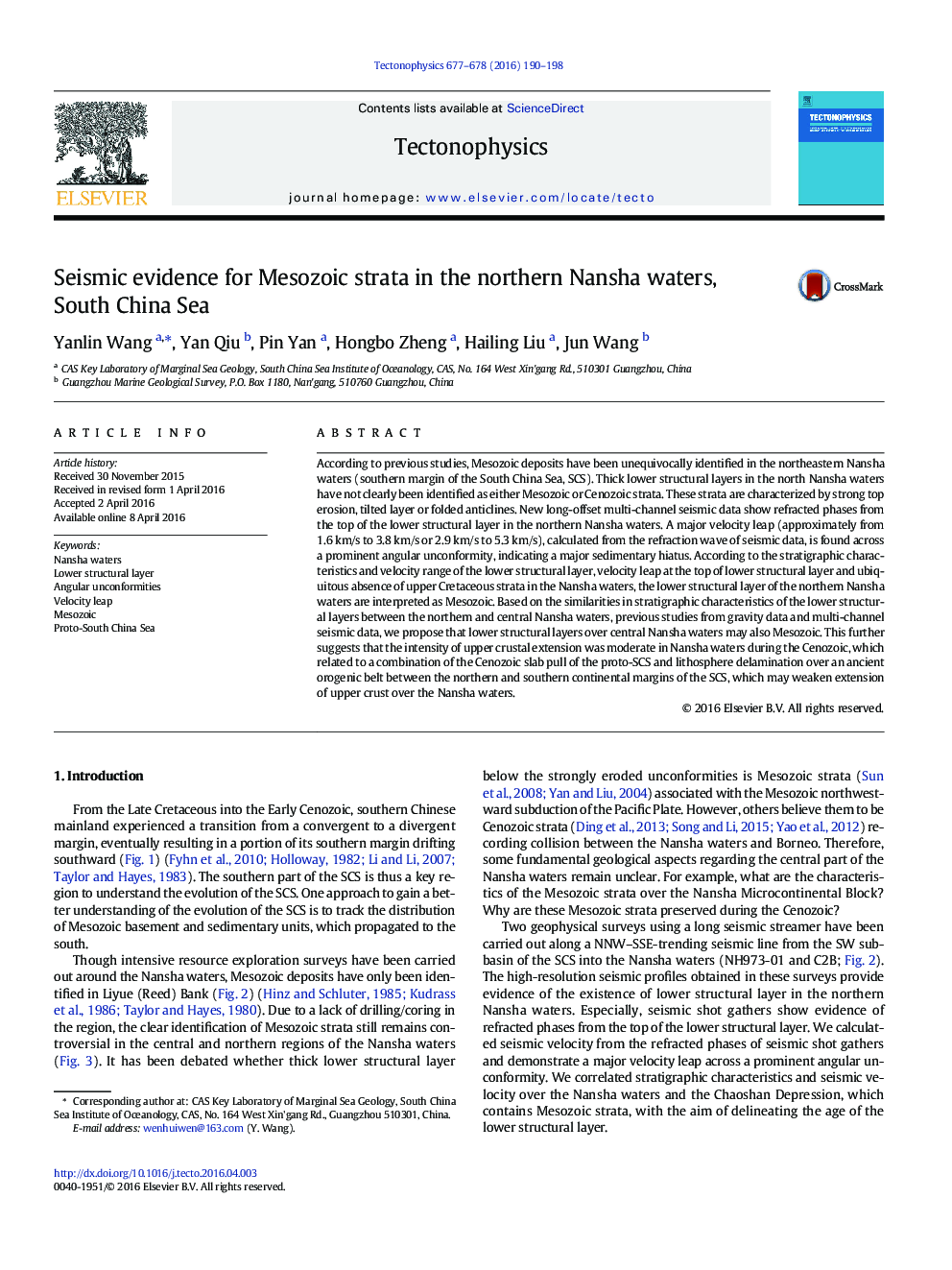| Article ID | Journal | Published Year | Pages | File Type |
|---|---|---|---|---|
| 4691353 | Tectonophysics | 2016 | 9 Pages |
•Angular unconformities separate strata of the northern Nansha waters into two parts.•Lower structural layer is characterized by strong top erosion and fold structure.•A major velocity leap exists across the top of the lower structural layer.•The lower structural layer of the northern Nansha waters is identified as Mesozoic.
According to previous studies, Mesozoic deposits have been unequivocally identified in the northeastern Nansha waters (southern margin of the South China Sea, SCS). Thick lower structural layers in the north Nansha waters have not clearly been identified as either Mesozoic or Cenozoic strata. These strata are characterized by strong top erosion, tilted layer or folded anticlines. New long-offset multi-channel seismic data show refracted phases from the top of the lower structural layer in the northern Nansha waters. A major velocity leap (approximately from 1.6 km/s to 3.8 km/s or 2.9 km/s to 5.3 km/s), calculated from the refraction wave of seismic data, is found across a prominent angular unconformity, indicating a major sedimentary hiatus. According to the stratigraphic characteristics and velocity range of the lower structural layer, velocity leap at the top of lower structural layer and ubiquitous absence of upper Cretaceous strata in the Nansha waters, the lower structural layer of the northern Nansha waters are interpreted as Mesozoic. Based on the similarities in stratigraphic characteristics of the lower structural layers between the northern and central Nansha waters, previous studies from gravity data and multi-channel seismic data, we propose that lower structural layers over central Nansha waters may also Mesozoic. This further suggests that the intensity of upper crustal extension was moderate in Nansha waters during the Cenozoic, which related to a combination of the Cenozoic slab pull of the proto-SCS and lithosphere delamination over an ancient orogenic belt between the northern and southern continental margins of the SCS, which may weaken extension of upper crust over the Nansha waters.
